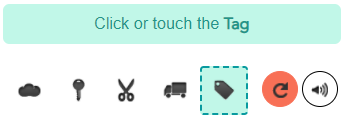Are Car Insurance Rates Negotiable?
Although it's not possible to haggle with a car insurance company, you can take some easy steps to lower your rates.

Can you negotiate car insurance rates?
In short, no. Insurance pricing factors are myriad, with car insurance companies factoring in a driver's history of infractions and collisions, their credit score, age, gender, location, the type of vehicle insured, and more. In addition to each insurance company's specific pricing structure, state-specific regulations can come into play.

Much like a utility service like electricity or gas, you simply cannot haggle for a lower monthly car insurance payment. What you can do, however, is compare rates and find an affordable policy.
How to lower your car insurance rates in six easy steps
1. Compare car insurance rates every six months
Although you can’t negotiate your car insurance rate, you’re not contractually obligated to stay with your insurance company. If you find a cheaper rate elsewhere, you can switch insurance providers. Depending on when you cancel and the fine print of your car insurance policy, you could incur fees.
Some companies will add a fee if you cancel very early or very late in your policy period. Outside of these circumstances, an insurer should not charge you for early cancellation. Any premium for which you've paid in advance should be refunded, as well.
2. Be smart with your insurance claims
Car insurance can be a double-edged sword. The more you use it, the more it costs. The general rule of thumb with auto insurance is not to use it if you can afford to cover the out-of-pocket costs yourself. Most insurance companies will charge you extra for up to three years after an at-fault claim.

While the rate hike you receive may vary based on your location and provider, we've created an average rate increase after filing a collision claim in which the damage exceeded $2,000. See below how much this claim might cost over a three-year period.
IMPACT OF AT-FAULT CLAIM (3 YEARS) :-
Table of contents
| Year After Accident | Average Annual Premium | Increase vs Typical |
|---|---|---|
| No Accident | $1,548 | - |
| After 1 year | $2,315 | +$767 |
| After 2 years | $3,082 | +$1,534 |
| After 3 years | $3,849 | +$2,301 |



Over a three-year period, this claim could cost you $2,301 — plus your deductible. Given these figures, you should not file a claim if the out of pocket repairs cost less than the rate increase ($2,301) plus your deductible. If you're unsure of whether or not to file a claim, reference our guide below.
1. Get an estimate for the repairs at an auto shop.
2. Use Our State of Insurance analysis to see how much an at-fault accident raises car insurance rates in your state. Consider that this increase may span a period of three to five years.
3. Compare the out-of-pocket expenses to the rate increase you'd incur along with your deductible. If it's cheaper to file a claim, do that.
3. Understand your auto insurance coverage
The value of your vehicle helps to determine the insurance coverage you need. If your vehicle is owned outright and worth less than $4,000, you might not need comprehensive and collision coverage.
These coverages, only required if you’re leasing or financing a vehicle, are designed to protect your vehicle.
Table of contents

However, if your vehicle isn’t worth much, you might be paying for coverage you might not need. See below how your premiums can change based on the coverage you carry.
| Coverage Level | Average Annual Premium |
|---|---|
| Liability-only | $621 |
| $500 deductible | $1,453 |
| $1,000 deductible | +$1,277 |
You can determine the value of your vehicle via the Kelley Blue Book or NADA. If you decide to remove collision and comprehensive coverage, consider keeping uninsured motorist bodily injury and property damage coverage. This way, you still be covered if a driver without insurance or insufficient insurance coverage damages your vehicle.
It's also important to ensure you’re properly covered. Many drivers leave themselves and their assets at risk in order to keep their premiums low. If you have a loan or lease on a new car or a valuable older model, you should carry collision, comprehensive, and potentially gap insurance. Without these coverage options, you will have no coverage in the event of an at-fault accident.
4. Bundle your policies
If you rent or own a home or condo, keep all your insurance policies together with the same company. Not only will this cut down on the number of insurance companies you have to deal with, but will lower the premium on each policy.
5. Consider discounts
You shouldn’t stay with an insurance company simply because of a single discount. However, it’s a good idea to look for the best possible discounts, depending on your driving profile. See below some common auto insurance discounts, and follow the links for more information.
• Good/safe driver (no incidents or a defensive driving course)
• Multiple drivers
• Multi-vehicle
• Multiple policies
• Payment by bank account
• Paid-in-full
• Good student
• Telematics or in-car safety features
• eSign
• Group participation/affinity membership discount
• Homeowner discount
• Green vehicle discount
Not all of these discounts will be available, as they are subject to state and insurance provider restrictions. While discounts can add up to save you money, it is by no means the best way to lower your car insurance premiums. The absolute best way to ensure you're paying the least for car insurance is to follow all our tips. Shop around as much as possible, keep your claims as minimal as possible, and understand your coverage.
6. Review frequently asked questions on how to reduce car insurance costs
How do car insurance companies set rates? Each state has different car insurance regulations to determine how rates are set. Your individual driving profile also contributes to how much you pay. Your driving record, address, type of vehicle, and — in some states — age, gender, and credit history are used to determine your rates.
What details do you need to provide to get cheap car insurance quotes?
Because auto insurance rates are dependant on the individual profile of every driver, you will

need to provide certain personal details in order to get an accurate rate. This includes your age, address, type of vehicle, driving history, and, in some states, even your credit history. It’s important to remember that a quote is just an estimate of what you will pay. Underwriters ultimately set your rates based on the information you provide
as well as your official driving record. In general, the more information you provide, the more accurate your quote will be.
How do I get free car insurance quotes?
You can get free car insurance quotes in a number of ways. One way of doing so is to reach out to insurance companies individually. After providing certain personal details, companies can give you an insurance quote quite quickly. A more efficient method is to compare many auto insurance quotes at the same time.




























